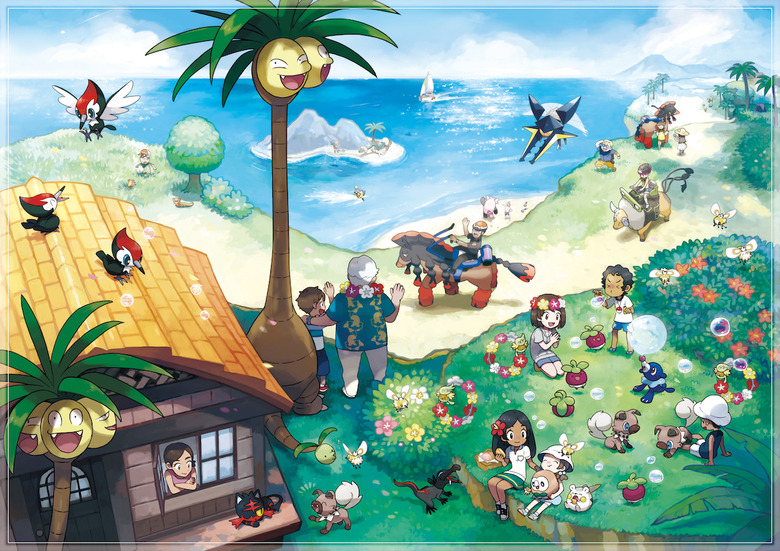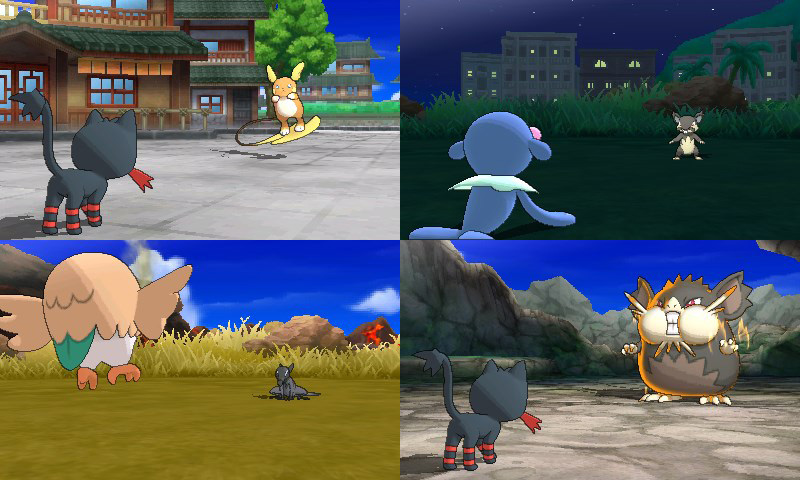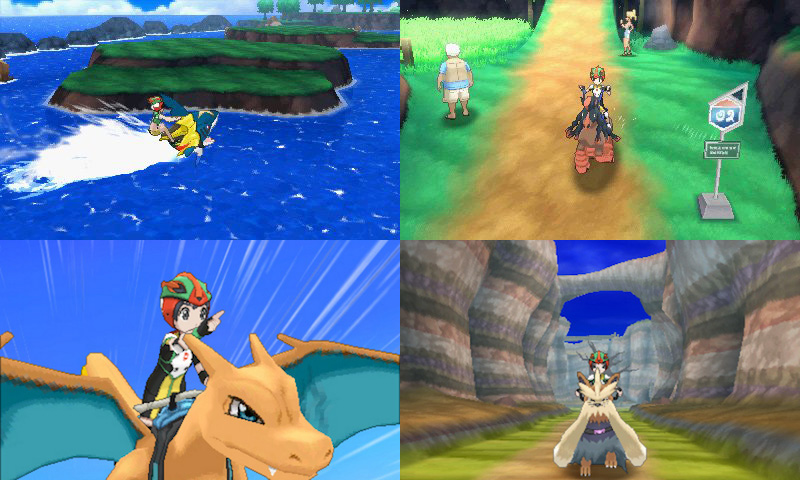Pokemon Sun And Pokemon Moon Review: Living On Island Time
Although Pokemon Go might have looked like a resurrection to gamers who hadn't touched the series since the Game Boy days, Pokemon never really went away. The card game remains incredibly popular, the spinoffs have succeeded more often than they've failed and Pokemon X and Y are the best-selling 3DS games. Ever.
With that said, you can probably see why Pokemon Sun and Pokemon Moon would have been a big deal even if Pokemon Go had never existed. But with around 800 Pokemon and 20 years of history, does the series have anything left in the tank?
MUST SEE: Titanfall 2 review: Iron giants
Pokemon Sun and Pokemon Moon take place in the Alola region, which is made up four separate islands. Rather than working your way through a Pokemon League with gym battles and an eventual showdown with the Elite Four, you are tasked with completing the island challenge, which consists of multiple trials on every island, each of which end in a battle with a Totem Pokemon (basically a super-powered version of a Pokemon you'd find out in the wild).
While there are some radical changes to Sun and Moon, the story follows most of the same beats as other Pokemon games; the main character wants to become the strongest Pokemon trainer in the region, but a misguided group of Pokemon stealers (Team Skull in this case) serve as a roadblock along the way.
The twist here (which I won't discuss in too much detail for fear of spoiling the plot) is the discovery of Ultra Beasts, which are creatures from another dimension that threaten the continued existence of both humans and Pokemon alike.
Ultra Beasts aside, Alola is packed with clever, inventive and powerful Pokemon — from the almost unbearably adorable starter Pokemon to the dozens of brand new creatures out in the wild to the Alolan variants of classic Pokemon, you're going to find a lot to love as you fill in your tropical Pokedex.
Combat is mostly unchanged — certain types are strong against other types; higher level Pokemon are nearly impossible to take down without exploiting their weaknesses; defensive moves are for chumps (that's just my own personal rule) — but there are a few noteworthy changes that freshen up Pokemon battles.
First are the Z-Moves, which have taken the place of Mega Evolutions from Pokemon X and Pokemon Y. Rather than obtaining gym badges as you progress, you'll be awarded Z-Crystals, which your Pokemon can hold to unleash powerful Z-Moves corresponding to their type. You can only use a Z-Move once per battle, so if you're taking on a trainer with multiple Pokemon, make sure to time it correctly.
The other big change is the ability to see a Pokemon's strengths and weaknesses after you encounter it for the first time. For example, if I run across a Bounsweet (which is a Grass-type Pokemon), and I battle it with my Litten (a Fire-type Pokemon), any of Litten's Fire-type moves will be tagged with "Super Effective."
While some may claim that this takes the "skill" out of the game, it just took away the guesswork for me. Not having to either a) memorize every Pokemon's type or b) pull up Google during every encounter was a huge sigh of relief.
Speaking of reliefs, Pokemon Sun and Moon do away with the annoying tradition of having to teach a Pokemon a specific move from an HM (Hidden Machine) in order to progress through the game. So instead of learning Fly, Cut or Surf, you will receive a Ride Pager early on in the game that will allow you to call on Pokemon to ride around the islands of Alola. Tauros will charge through boulders, Charizard will fly you to any location you've been previously, etc.
Not only are Poke Rides more convenient than HMs (they don't take up a valuable move slot on one of your Pokemon AND they can be accessed with the press of a single button), but they also make the world feel more dynamic and alive. Less time in menus fiddling with moves, more time charging through Route 8 on the back of a Tauros. Here's hoping we never see HMs again in any future Pokemon game.
Beyond the standard battling and catching that make up the bulk of any entry in the Pokemon franchise, there are also several diversions for players to participate in when they want a break from the extensive campaign:
- Festival Plaza: An online lobby populated by both NPC visitors that need your help and other players with whom you can battle and trade. When you help a visitor, you'll be rewarded with Festival Coins, which you can spend on meals to increase a Pokemon's friendliness, a bouncy house that will increase a Pokemon's stats and various other activities. There are even missions to take on that require cooperation from visitors, but carry greater rewards.
- Poke Pelago: Turn your PC Box into a home. If you've ever played a Pokemon game before, you're probably familiar with the PC Box — the place where any Pokemon you catch goes if your party is full. With Poke Pelago, the Box has received an extreme makeover as all your unused Pokemon have moved to a private island where they can train, find items and help you grow berries. You will also be able to develop new islands (where the aforementioned activities take place) and attract Pokemon to the main island, which may end up joining your party.
- Pokemon Refresh: Replacing Pokemon-Amie from X and Y is Pokemon Refresh. While it works in much the same way as Pokemon-Amie (save for the pointless minigames), allowing you to play with your Pokemon to make them friendlier, you can also access Pokemon Refresh directly after a battle to eliminate a Pokemon's status effects. This does become somewhat tedious over time, but much like Poke Rides, makes you a more active participant in the world.
Although I chose to spend a vast majority of my time playing through Pokemon Sun, the two games (as you might expect) are virtually identical... save for one intriguing change. Sure, there are a few different Pokemon in Moon that you won't find in Sun (including the Legendary Pokemon Lunala), but while time in both Sun and Moon is tied to your 3DS system settings, time in Pokemon Moon is actually shifted forward 12 hours. So if it's noon in the real world, it's midnight in-game.
This won't make a noticeable difference in terms of how you play the game, but it's evidence of the attention to detail that pervades the seventh generation games.
As with previous games, Pokemon Sun and Moon feature robust online trading and battling systems, but I wasn't able to test them under embargo. On the day the game launches, the developers will launch the updated Pokemon Global Link, giving players the opportunity to battle with others around the world.
At this point, I've covered virtually everything I wanted to cover, but I still didn't get to the new Battle Royal format, which pits four Pokemon against one another in a free-for-all battle, the talkative Rotom Dex that takes over for your Pokedex or the bevy of amusing characters you'll meet in Alola. But if anything, I hope that speaks to just how massive both of these games truly are.
Pokemon Sun and Pokemon Moon probably won't convert anyone who doesn't appreciate the Pokemon formula, but they provide the most significant shake-up for the series since it launched in 1996. By eschewing many of the tropes that had become stale after 20 years of overuse, Sun and Moon provide a much-needed vacation that still manages to capture the joy of being a Pokemon trainer.
Nintendo provided BGR with copies of Pokemon Sun and Pokemon Moon for the purposes of this review.


